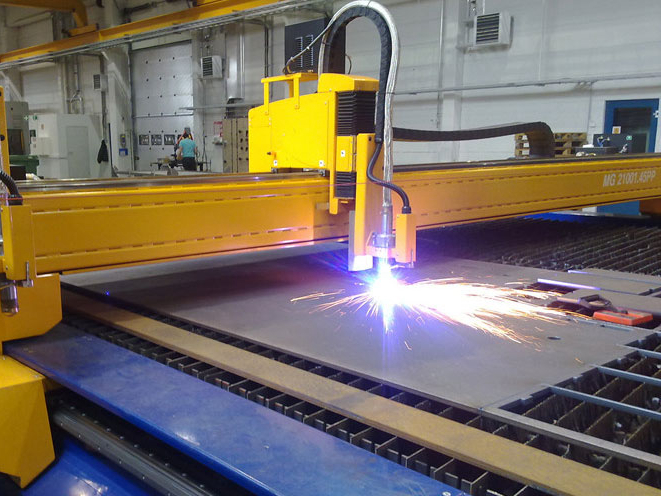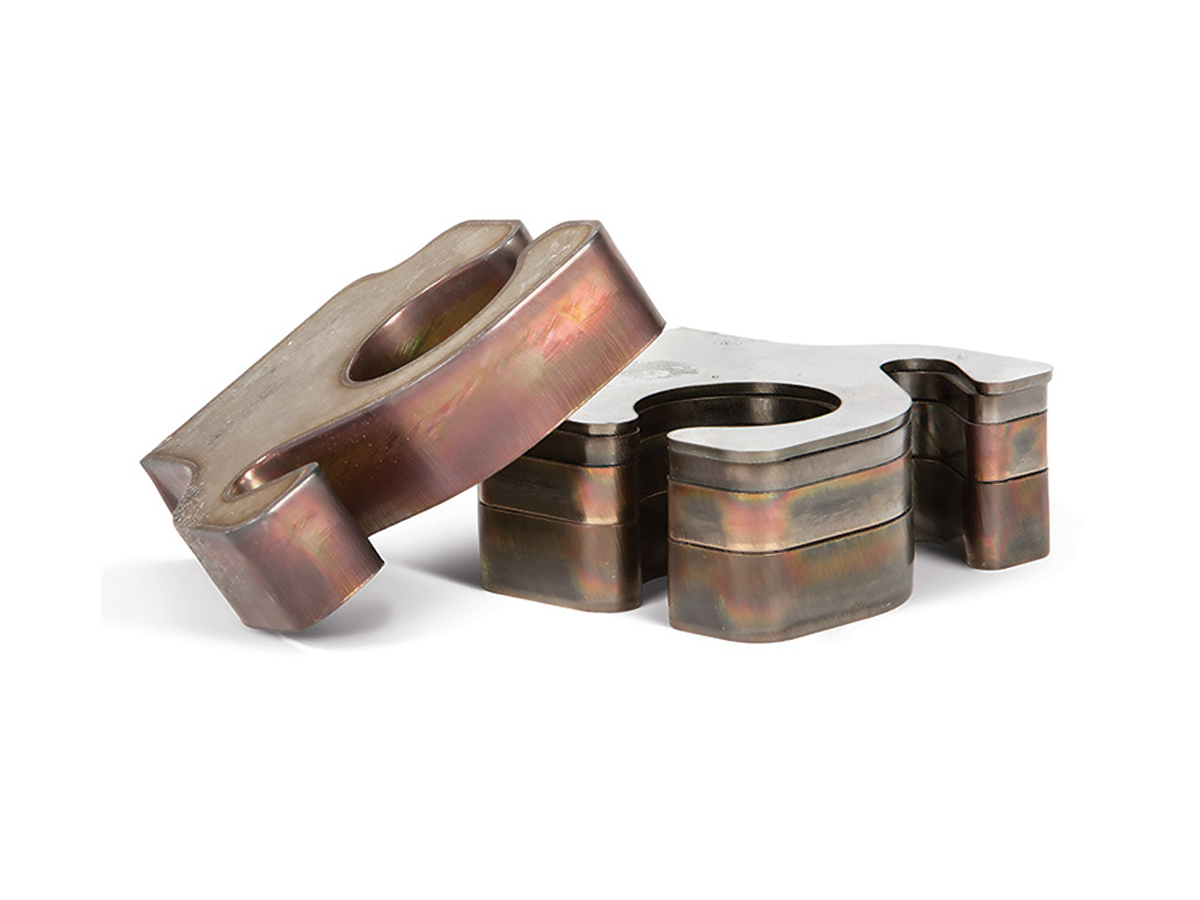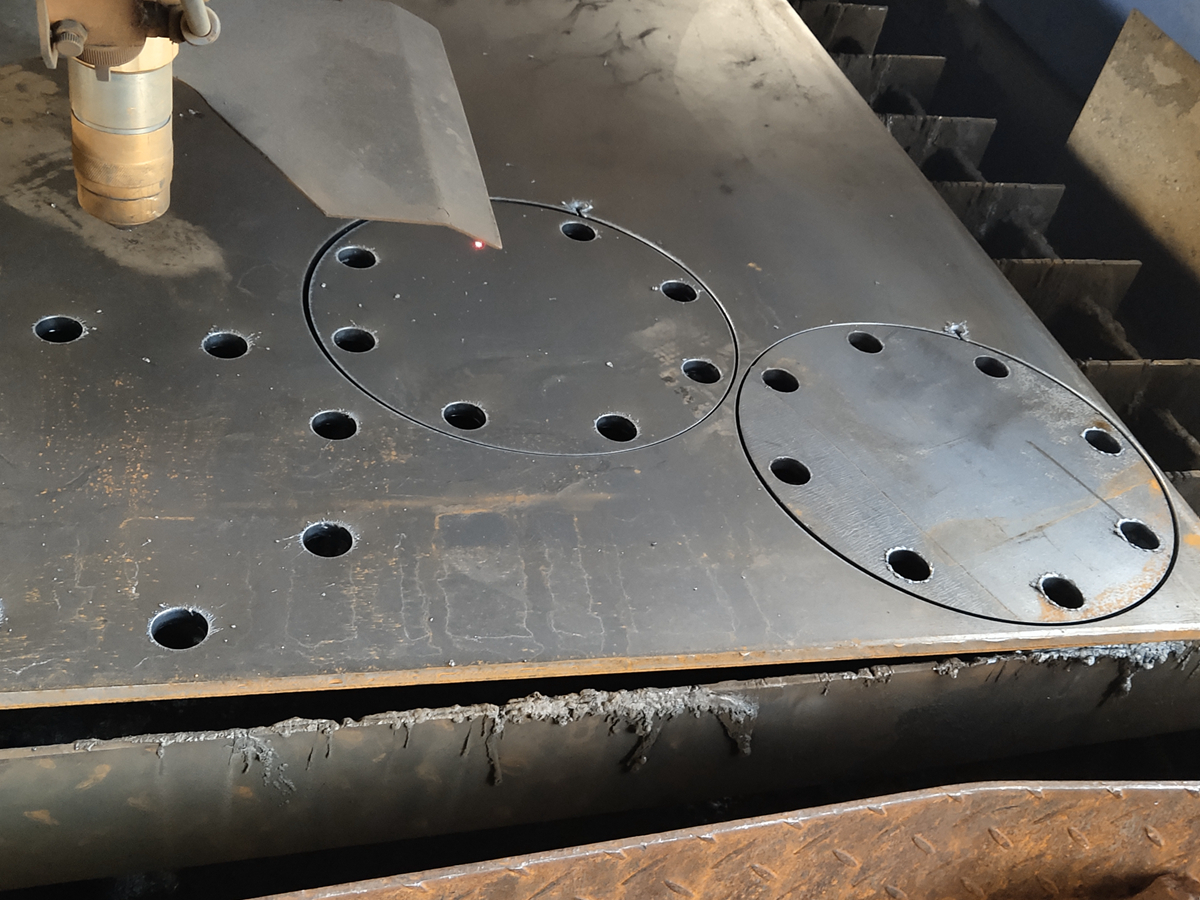Material Mastery: Custom Plasma Cutting for Diverse Industrial Applications
Introduction
In today’s industrial environment, efficiently processing a wide range of materials is crucial to achieving manufacturing success. Plasma cutting technology stands out as a versatile solution that can handle a wide range of materials with precision and speed. This method is ideal for businesses seeking to enhance operational efficiency, reduce production costs, and achieve exceptional manufacturing outcomes across industries.
Understanding Plasma Cutting Technology
Plasma cutting utilizes a high-temperature plasma arc that passes electricity through an ionized gas stream. This powerful technique efficiently cuts conductive metals like steel, aluminum, copper alloys, and brass, offering distinct advantages over traditional methods such as mechanical cutting or oxy-fuel processes.
Plasma cutting stands out by offering:
Enhanced cutting speeds
Greater accuracy and detailed cuts
Superior compatibility with various materials and thicknesses
Advantages of Custom Plasma Cutting
Accelerated Cutting Speeds
Custom plasma cutting offers significantly faster cutting speeds compared to traditional metal-cutting techniques, including laser cutting and oxy-fuel processes. This accelerated pace directly reduces production times, improving manufacturing efficiency and responsiveness to market demands.
Precision and Accuracy
One of plasma cutting’s core benefits is its ability to perform precise, intricate cuts with excellent dimensional accuracy, thereby reducing the need for extensive secondary machining operations, such as metal polishing or grinding. This precision produces substantial savings in labor, materials, and overall costs.
Material Versatility
Plasma-cutting technology handles an impressive range of metal types and thicknesses without significant adjustments or downtime. Whether fabricating high-performance nickel-based alloys, aluminum components, or intricate brass parts, plasma cutting offers unmatched flexibility, making it ideal for customized or specialized production projects.
Economic and Operational Benefits
Cost-Effective Manufacturing
The increased efficiency of plasma cutting significantly reduces operational costs by minimizing labor hours, material usage, and the need for secondary operations. This streamlined production method reduces manufacturing costs, providing businesses with a cost-effective alternative to traditional sheet metal stamping processes.
Reduced Secondary Finishing
Due to plasma cuts' high quality and precision, secondary finishing methods such as grinding, sanding, or intensive machining become largely unnecessary. This efficiency directly reduces post-processing labor and associated costs, enhancing overall operational productivity.
Sustainability through Reduced Waste
Plasma cutting generates minimal scrap compared to other metal fabrication methods, aligning well with eco-smart manufacturing practices. By significantly reducing material waste, manufacturers can enhance sustainability and lower their environmental impact.
Key Industry Applications for Plasma Cutting
Automotive Manufacturing
Custom plasma cutting is extensively used in automotive production to create precise and durable parts such as chassis components, brackets, and structural elements, enhancing both production efficiency and component reliability compared to traditional metal bending methods.
Aerospace and Aviation Industries
The aerospace sector relies heavily on plasma cutting to produce precision-critical components, such as structural supports and fittings, made from advanced materials like Inconel 713LC. This technology provides the necessary accuracy and consistency for high-quality aerospace manufacturing.
Metal Fabrication and Construction
In metal fabrication, plasma cutting efficiently handles structural steel components, metal frameworks, and architectural parts. Compared to older techniques such as sand casting, the technology's accuracy and versatility facilitate precise fabrication, improving productivity and helping manufacturers meet demanding construction timelines without compromising quality.
Heavy Machinery and Industrial Equipment
Heavy machinery producers rely heavily on plasma cutting to create precise, durable components. Industries that manufacture heavy-duty parts utilize this technology to achieve high precision and reduced turnaround times, significantly enhancing product performance and longevity compared to more conventional approaches, such as gravity casting.
Addressing Common Plasma Cutting Challenges
Managing Heat Distortion
Heat distortion is a common challenge with thermal cutting processes. Effective heat management practices, such as optimized cutting sequences and automated systems, minimize distortion and ensure consistently high-quality cuts.
Ensuring Consistent Cut Quality
Achieving consistent cut quality requires ongoing equipment maintenance, adherence to optimal plasma cutting parameters, and skilled operators. Maintaining quality control in CNC machining ensures reliable outcomes and minimizes errors.
Optimized Material Handling
Proper material handling is critical for maximizing plasma cutting efficiency. Implementing automated or optimized material handling solutions reduces operational downtime and streamlines workflow, further enhancing production efficiency and reducing overhead costs.
Future Innovations in Plasma Cutting Technology
Integration of Robotics and Automation
The rise of automated and robotic plasma-cutting solutions promises improved precision, consistency, and efficiency. Future automation developments will continue to optimize production, offering even greater accuracy and productivity gains comparable to those seen in multi-axis CNC machining.
Precision Plasma Arc Developments
Advances in plasma arc technology, such as high-definition plasma arcs, will enhance precision and edge quality, expanding the technology’s applicability to industries that demand ultra-tight tolerances and exceptional surface finishes.
Sustainable Cutting Innovations
Manufacturers increasingly emphasize sustainable cutting practices, including eco-friendly, energy-efficient plasma cutting systems, recyclable consumables, and reduced emissions. These innovations align plasma cutting with growing industry demands for environmentally responsible manufacturing.
Conclusion
Custom plasma cutting technology presents a robust manufacturing solution, combining unmatched efficiency, precision, and material versatility. Its ability to handle diverse industrial applications and materials efficiently positions businesses for improved competitiveness, operational excellence, and environmental sustainability. By embracing plasma cutting, manufacturers can significantly enhance production outcomes, reduce costs, and achieve their long-term sustainability and productivity goals.
FAQs:
What types of metals can be efficiently processed by plasma cutting?
How does plasma cutting technology achieve precision and reduce material waste?
What are the key advantages of plasma cutting in industrial applications?
What are common challenges manufacturers face when implementing plasma cutting?
How is custom plasma cutting technology evolving to meet sustainability goals?




